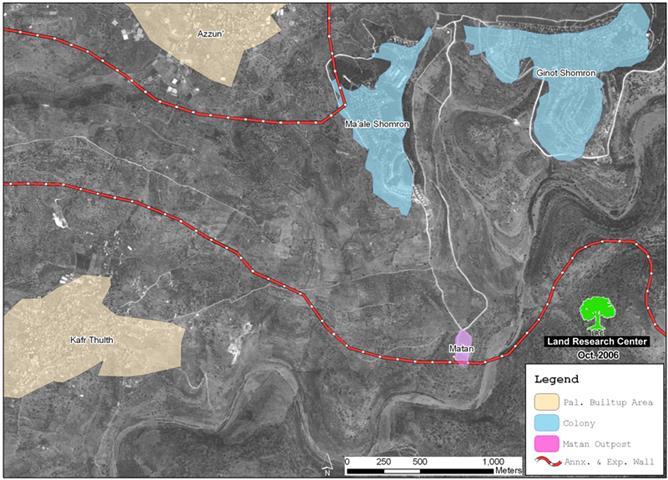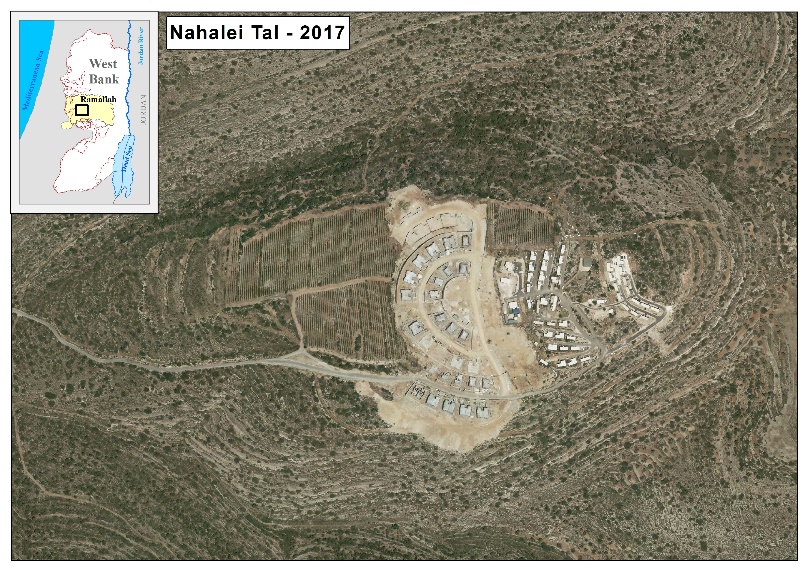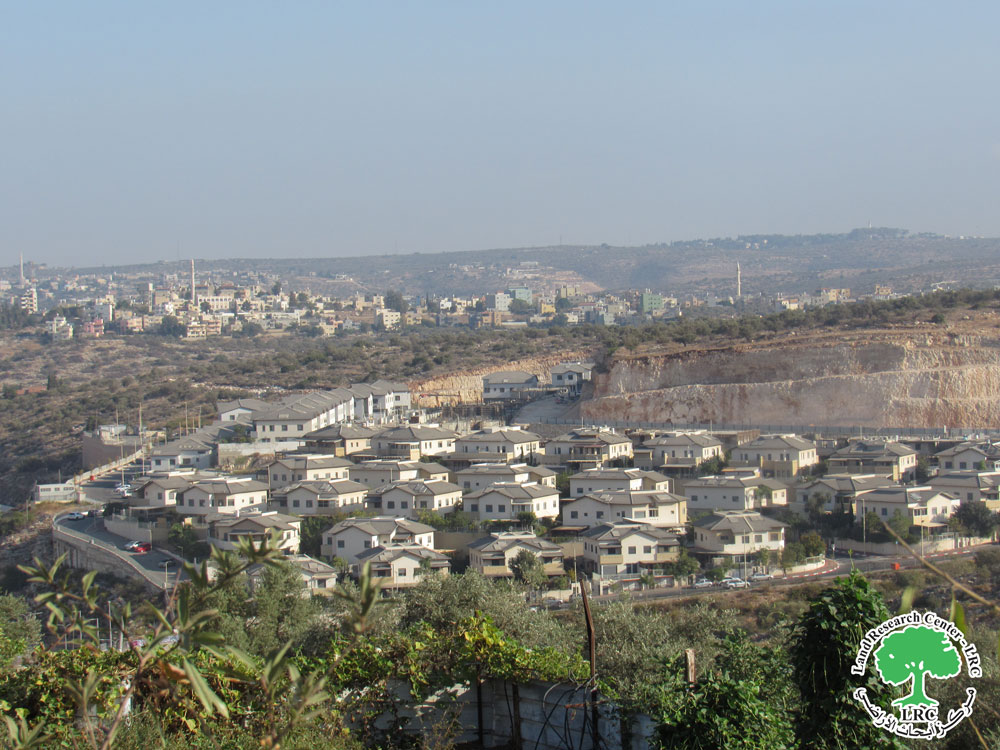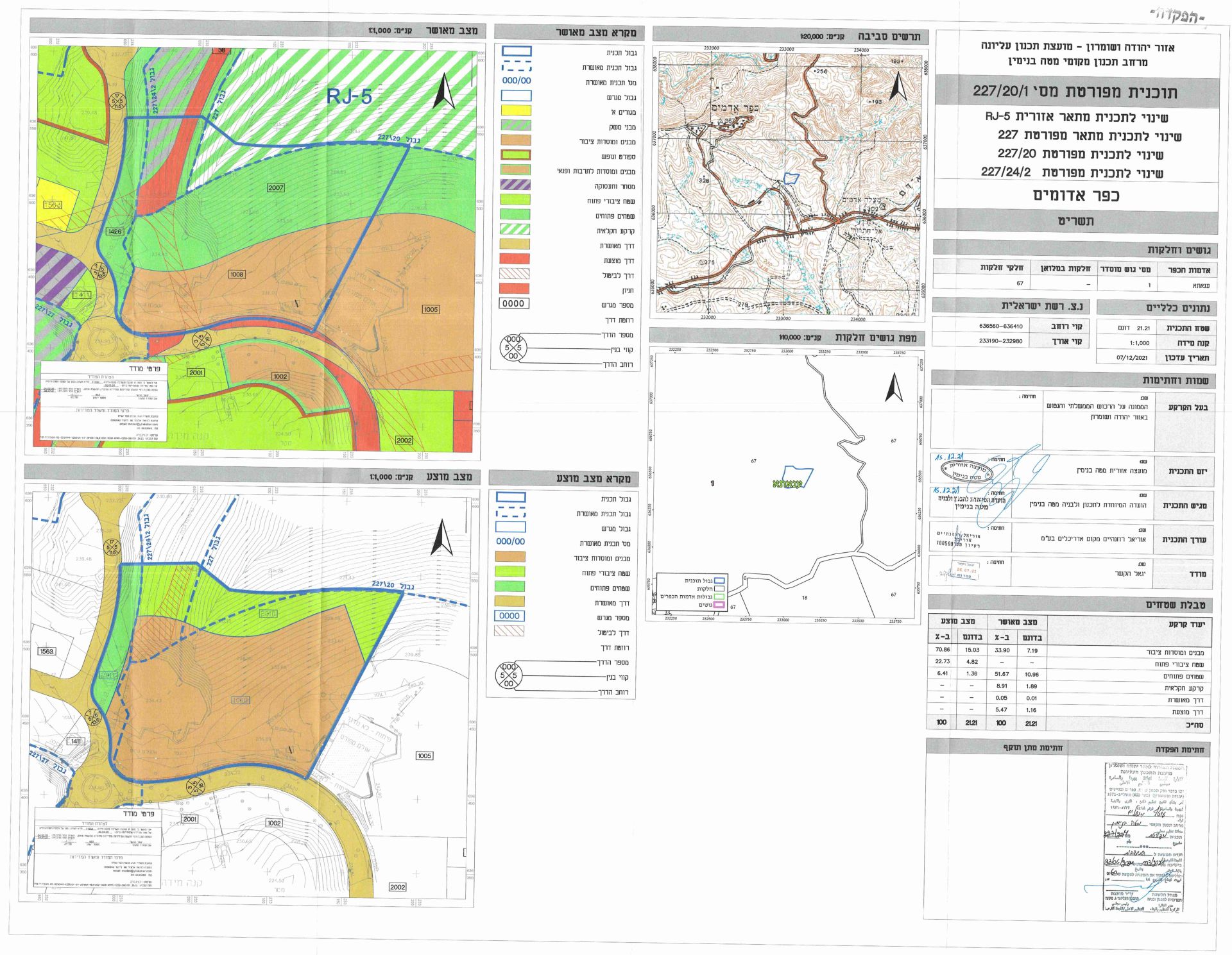Israeli settlers from Matan colonial outpost started to bulldoze Palestinian land in Wadi Al Qari' site, basin number 7 of Kafr Thuluth village land, Qaqiliay governorate for the purpose of linking the outpost with electricity network of Karne Shomron settlement block.
Matan outpost was established over confiscated Palestinian land at the beginning of 2001 in response to Ariel Sharon' call for settlers to occupy hilltops of the West Bank ' before loosing them to Palestinians in negotiation'.
Matan outpost is located one and a half km to the south of the aforementioned settlement block inside the newly erected Segregation Wall and about two km to the east of Kafr Thukuth village. When started, it had three caravans ( mobile homes). Now, it has 21 caravan. Ever since its emergence, the settlers of Matan have been laying down the infrastructure by opening two parallel roads at the length of two km from karne Shomron with the aim of joining the outpost with the Karne Shomron block. One of the road has been recently paved. Two years ago, a water line was, also, laid down to Matan outpost from Karne Shomron settlement. See Photo 1
The electricity line is being built inside the Wall- separated Palestinian land along the road linking between the outpost and the settlement block resulting in the devastation of additional areas of agricultural fields which are owned by farmers from Kafr Thuluth.
Impact of Matan outpost on Palestinian life and properties
1. The continuous grabbing of land and natural resources in the area;
2. The gradual expansion of the Karne Shormorn settlement block in the direction of Kafr Thukuth village;
3. The continuous dismissal of shepherds and flocks from the grazing zones at the hands of settlers who often open fire, confiscate or steal flocks and beat shepherds. For, example, Shepherds Muheeb Mufeed Othman and Amer Mahmud were severely beaten last month and their flocks taken by the Matan settlers.
4. The cutting down of fruitful trees of different types, including, for instance, 250 olive trees and 200 almond trees belonging to Rashid Al Alim and 200 olive trees belonging to Hamid Zeib.
It is worth mentioning that dozens of complaints have been levied to the Israeli occupation authorities by the victims of these violations, but to no avail.
Karne Shormon Settlement block
The karne Shormon settlement block is comprised of four settlements, namely: Ma'ale Shomron, Ginot Shomron, Karne Shomron and Neve Oranim which are located in the most north eastern biggest finger-like corridor in the West Bank ( Ariel corridor) which aims at ensuring the annexation of all Israeli settlements in the area. This finger- like corridor of Ariel settlement block includes another 11 settlement: Ariel, Yakir, Revava, Keryat Netafim, Immanuel, Nufim, Barqan, Alei Zahav (Yo'ezer), Pedu'el, Beit Arie and Ofarim.
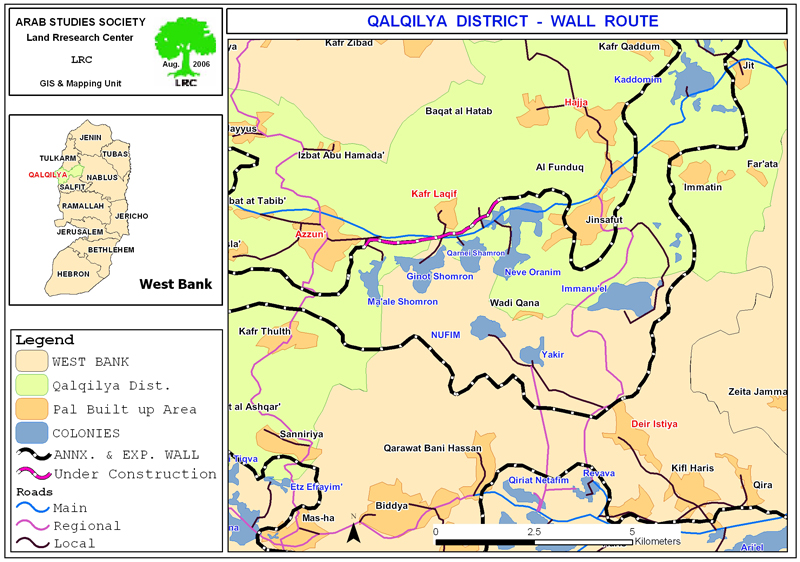
(Map 1: karne Shomron settlement block)
This corridor will result in the annexation of thousands of dunums of Palestinian lands and dozens of underground water wells which, in effect, will cause disastrous impact on the very existence and welfare of Palestinian people in the area. Works in this corridor started at the beginning of 2003 (for related information, please see the case study 'Resumption of Wall construction in the biggest finger-like corridor in the West Bank, Aug.2006).
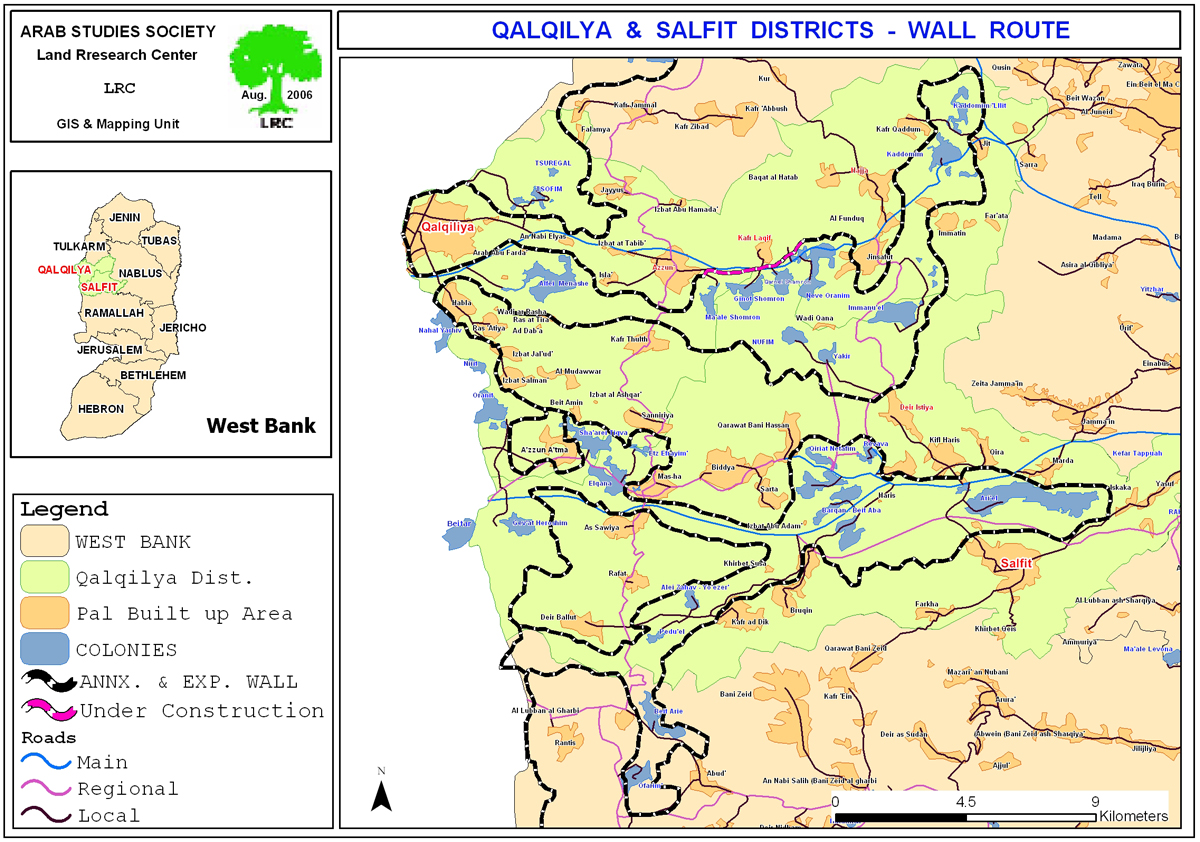
(Map 2: Wall route – Ariel corridor)
Location and population
The town of Kafr Thulth is located 6 kilometers away from the Green Line and located 12 kilometers south-of-east of the city of Qalqiliya. As for the latest population statistics (as late as 2002), it indicates that the current population of the village is about 5,000
The town is considered the 'mother' village of the following 'sub-villages': Izbat Salman, Izbat Jal'ud, Izbat Al Madwar, Ras at Tira, Ras Atiya, Al Daba� and Wadi ar Rasha. As such, the town of Kafr Thuluth and its satellite villages are considered one unit in terms of population and agricultural lands.
The 1948 War led to the occupation of 20% of the towns� lands which amounts to about 4,000 dunums. Two Israeli settlements were established on these occupied lands which became part of Israeli proper; the settlement of Nahal Yarhiv which was built atop the ruins of the Palestinian town of Khraish and the settlement of Nirit which was built in a location called Ahrash Al Zaqoor. The remaining 80% of the land of the town remained within the borders of the West Bank.
The Israeli Segregation Wall and Palestinian villages
The establishment of the Wall has led to the confiscation and separation of about 8000 dunums of Kafr Thuluth and the sub-villages associated with it apart from the town of Azzun. This figure constitutes 45% of the total area of the Kafr Thulth. It will, also, lead to the total isolation of sub-villages of Ras at Tira, Al Dab'a along with Wadi ar Rasha as the Wall is supposed to encircle them from all four directions. Such a grip transformed the residents of these population center from being farmers and/or workers inside Israel into jobless and hopeless group of people. Furthermore, the erection of the Wall has deprived the residents of the towns of Kafr Thulth and Azzun of any prospect of future expansion to meet the demands of natural population growth
Prepared by
The Land Research Center
LRC


